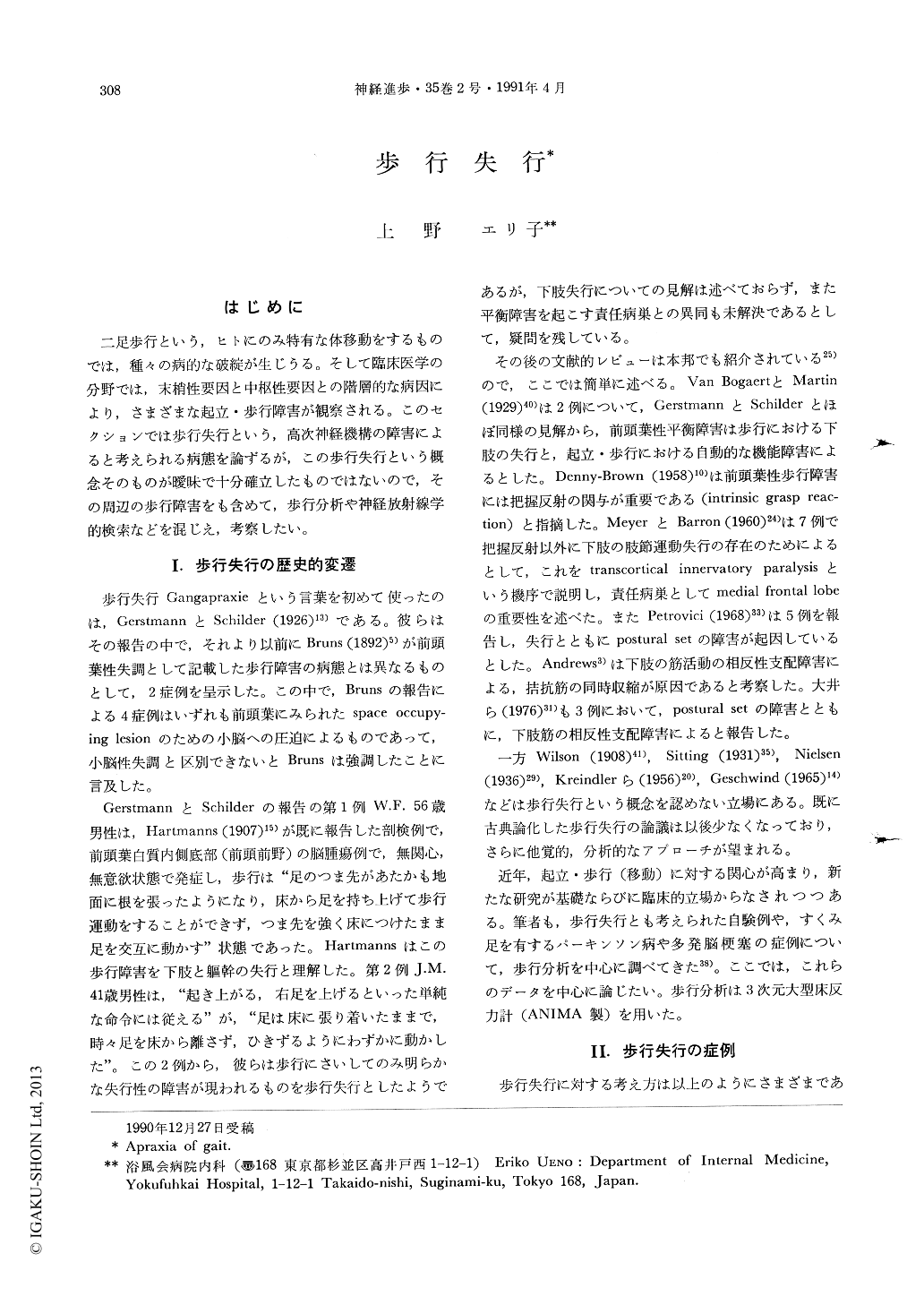Japanese
English
- 有料閲覧
- Abstract 文献概要
- 1ページ目 Look Inside
はじめに
二足歩行という,ヒトにのみ特有な体移動をするものでは,種々の病的な破綻が生じうる。そして臨床医学の分野では,末梢性要因と中枢性要因との階層的な病因により,さまざまな起立・歩行障害が観察される。このセクションでは歩行失行という,高次神経機構の障害によると考えられる病態を論ずるが,この歩行失行という概念そのものが曖昧で十分確立したものではないので,その周辺の歩行障害をも含めて,歩行分析や神経放射線学的検索などを混じえ,考察したい。
An analysis of gait with floor reaction forces were made in a patient with apraxia of gait and patients with Parkinson's disease or multiple cerebral infarction showing frozen gait or shuffling gait.
Gait of the patient with gait apraxia was characterized by inability to initiate the first step and slow stepping suddenly comming to abrupt stops midway. These features were analysed by recording floor reaction forces. This patient did not have paresis of limbs. He was capable of performing alternate treading motions in the sitting position and was even able to crawl on the floor. The lower limbs were able to make ordinary voluntary movement, and no limb kinetic apraxia of the lower limbs was observed. Ischemic lesions in bilateral frontal lobes supplied by the anterior cerebral arteries were found with CT scan in this patient, and these areas were considered responsible for the unique disorder of gait, particularly in its initiation.

Copyright © 1991, Igaku-Shoin Ltd. All rights reserved.


